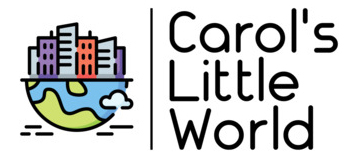This week, the World Press Photo organization announced their selection for photo of the year. The photo in question captured the assassination of Andrey Karlov, the Russian ambassador to Turkey, at an art gallery in Ankara, Turkey by Mevlüt Mert Altıntaş, a 22-year-old off-duty police officer. The image was taken by photographer Burhan Ozbilici from Turkey using a Canon EOS 5D Mark III camera. Relevant EXIF data shared includes information about the focal length used to take the shot and other technical details. It was shot using a 58 mm lens at f 5.0, ISO 1600 with an exposure time of 1/256 a second. The image itself depicts Mevlüt Mert Altıntaş holding a gun in a somewhat animated gesture while the body of the ambassador lay at his feet. You can see the image at this link if you would like to view it on their website.
The selection of the image for Photo of the Year has stirred a bit of controversy. NPR labeled the image “explosive” while Stuart Franklin of The Guardian UK proclaimed, “This image of terror should not be photo of the year – I voted against it.” (In the interest of full disclosure, The Guardian UK has previously published some of my work. Ancient history and all but I did think I should mention it if I’m trying to be honest and fair in my assessment of the award.) There have been several people in the photographic community discussing both the image and the award. Franklin brings up several valid points. The assassination was a planned terrorist attack and, by awarding the image such a prestigious honor, does this amplify the terrorist message? Is publishing such an image akin to publishing a terrorist beheading and can it help promote terrorism by rewarding such acts on an international stage?
My initial reaction to the image (I had seen it prior to the award recognition) was a sentiment echoed in Franklin’s remarks as well. Franklin states that, “It’s the third time that coverage of an assassination has won this
prize, the most famous being the killing of a Vietcong suspect,
photographed by Eddie Adams in 1968. ” Referring to the now iconic image “Saigon Execution” which depicts a Vietcong suspect being shot. My reaction to the Ozbilici image was initially, “sadly, every generation appears doomed to have its own Saigon Execution. Eddie Adams lives on in the spirit of these awards.” Upon further reflection however, there are some notable differences between the images.
For starters, the Adams image was taken in Saigon in 1968. This was a long time ago and mores change over time. The Vietnam era in particular ushered in a gruesome experience for photographers as the war itself was quite brutal. An image considered socially acceptable during a long running brutal war might not be embraced with the same level of acceptance during peace time.
Apart from the time and place, another difference I noted was the emotional tone for each of the images in question. In the Adams image, nobody is celebrating. There are no smiles. The execution is carried out as a soldier would perform an execution (one might imagine.) The Ozbilici image depicts Mevlüt Mert Altıntaş in a somewhat celebratory pose, finger pointing in the air assuming a gesture of defiance. He is far from an anonymous soldier carrying out orders. He is the face of terror for a new generation. There are other notable differences between the images but these are several that jumped out at me.
Now, I’m not really qualified to say if Ozbilici deserves the award or not, as I am not a judge for such competitions. I can say that, from looking at the EXIF data, the image in question was shot at 1/256 of a second. In that moment, in that instant, in that brief flash of time, one life was ended as a terrorist celebrated his victory. If anything, this should give us all pause for consideration. The world can and indeed does change in 1/256 of a second. Ozbilici was there to capture it. It’s neither his fault nor his celebration, merely his job to convey that change. Frankly, I think he did this brilliantly, although that was never in question. The larger question posed here is one that we as a society face. Do we want the moments that define us, that define our generation, our life and times, to be the Eddie Adams “Saigon Execution” or even the Ozbilici moments or should we all collectively look for something more? This is a question I hope the Ozbilici image will bring to light. Awards are awards, and we give them out sometimes to the most brutal of images but, honestly, is that who we have become? Is that really genuinely what we want to celebrate?
Until next time…
PS This image is a reflection captured with the Canon 5DS of sky in water. Taken with the walkabout lens, more from Washington.

